RARE WWII 1943 Operation Reckless New Guinea U.S. Army Air Force Pacific Theater Combat Aircraft Navigation Map




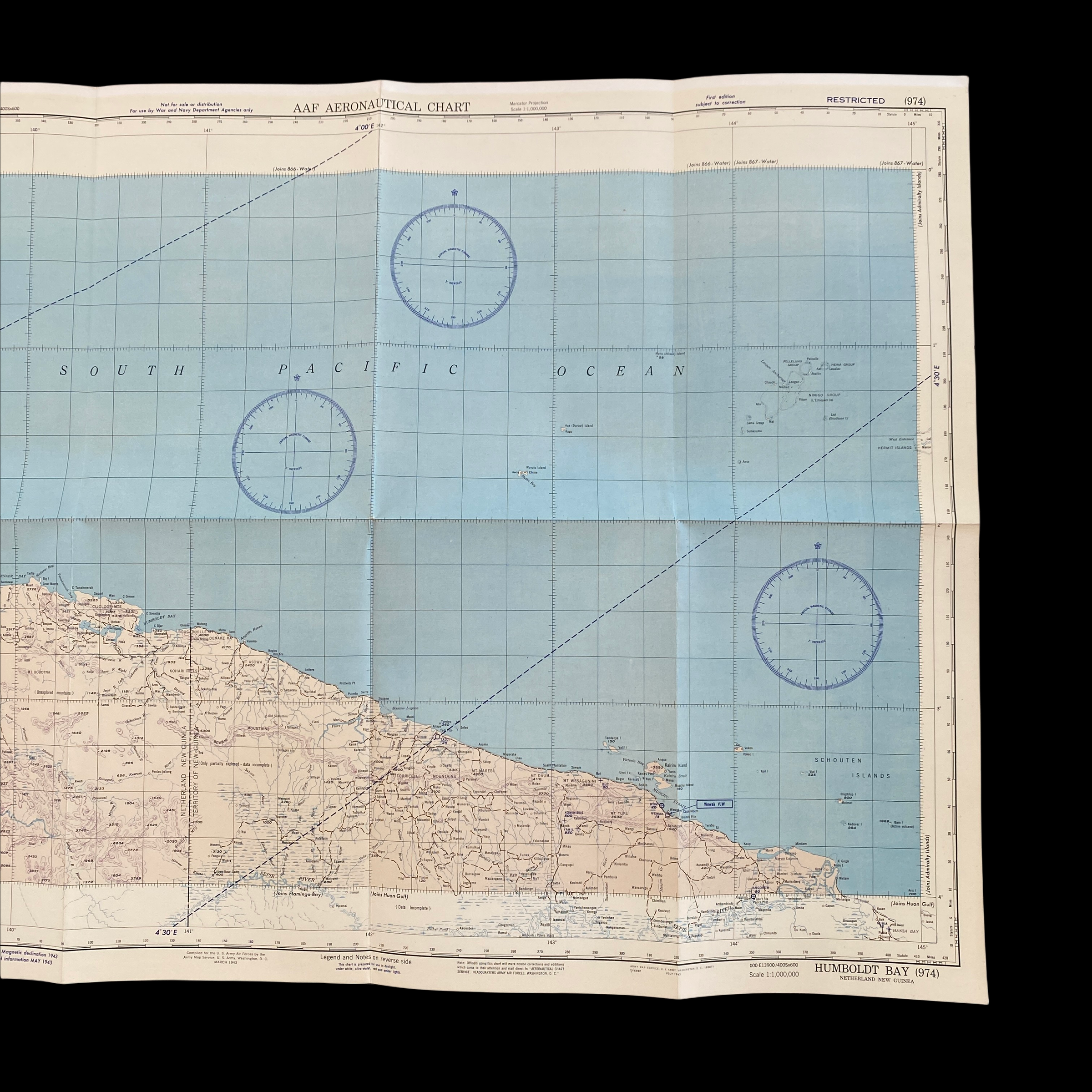



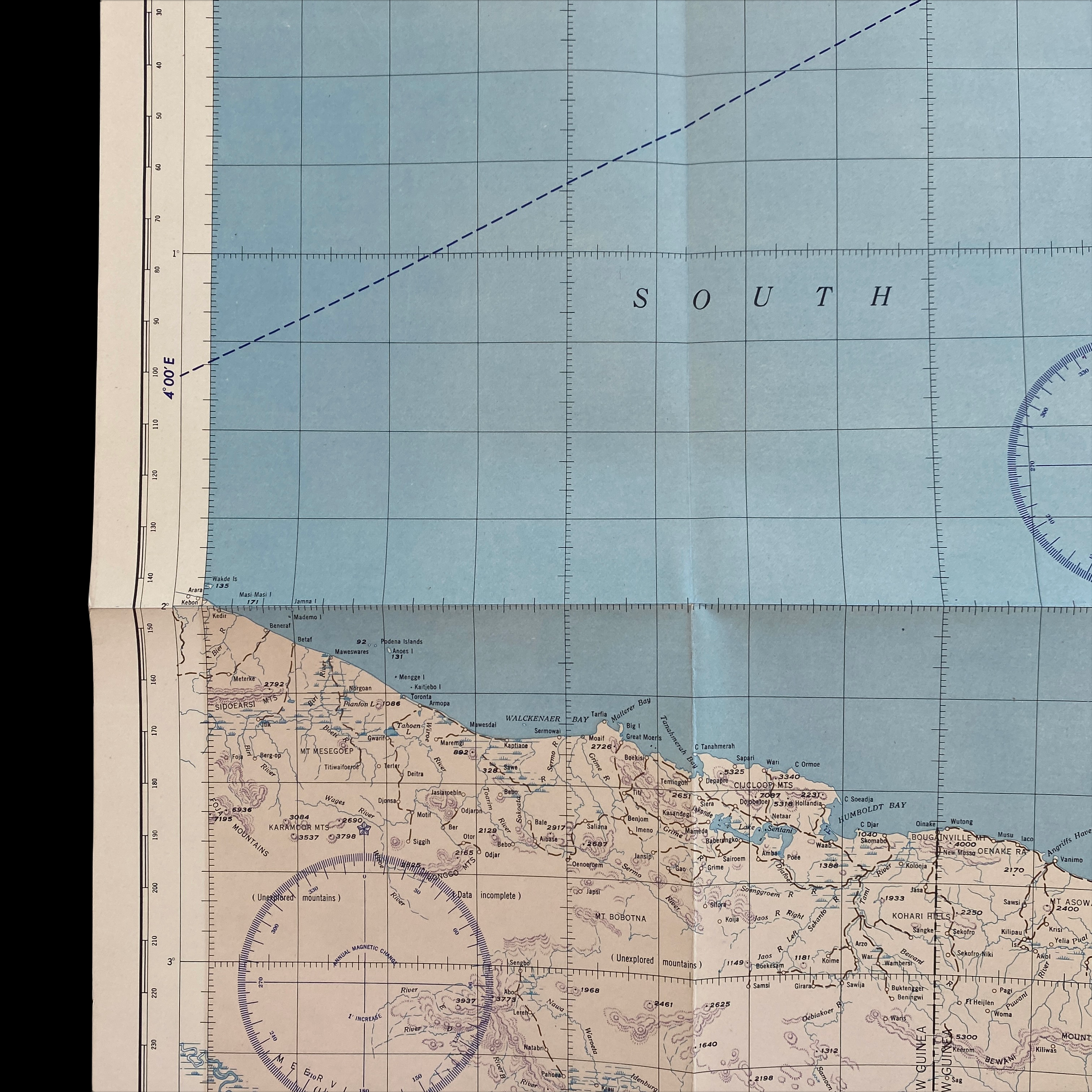
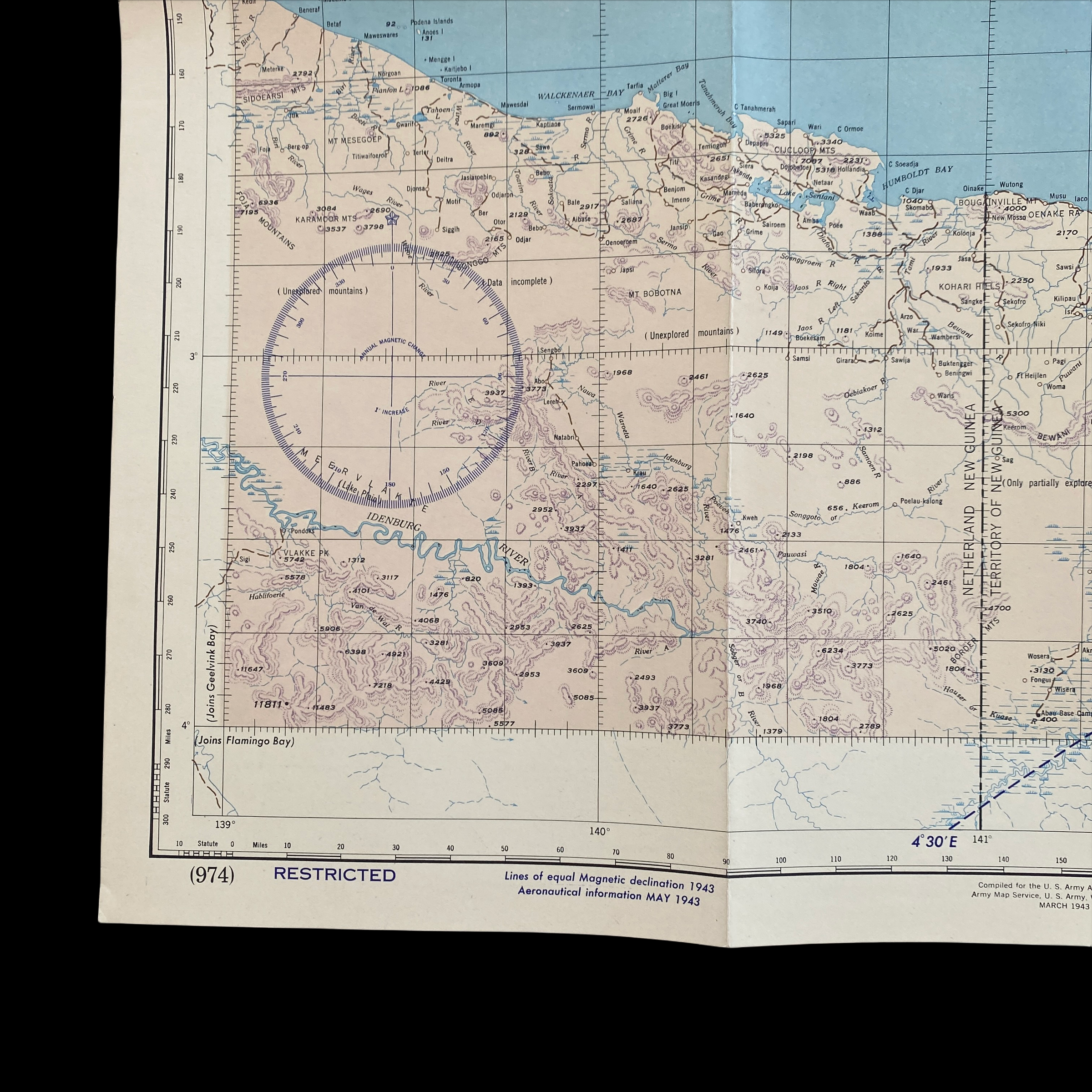
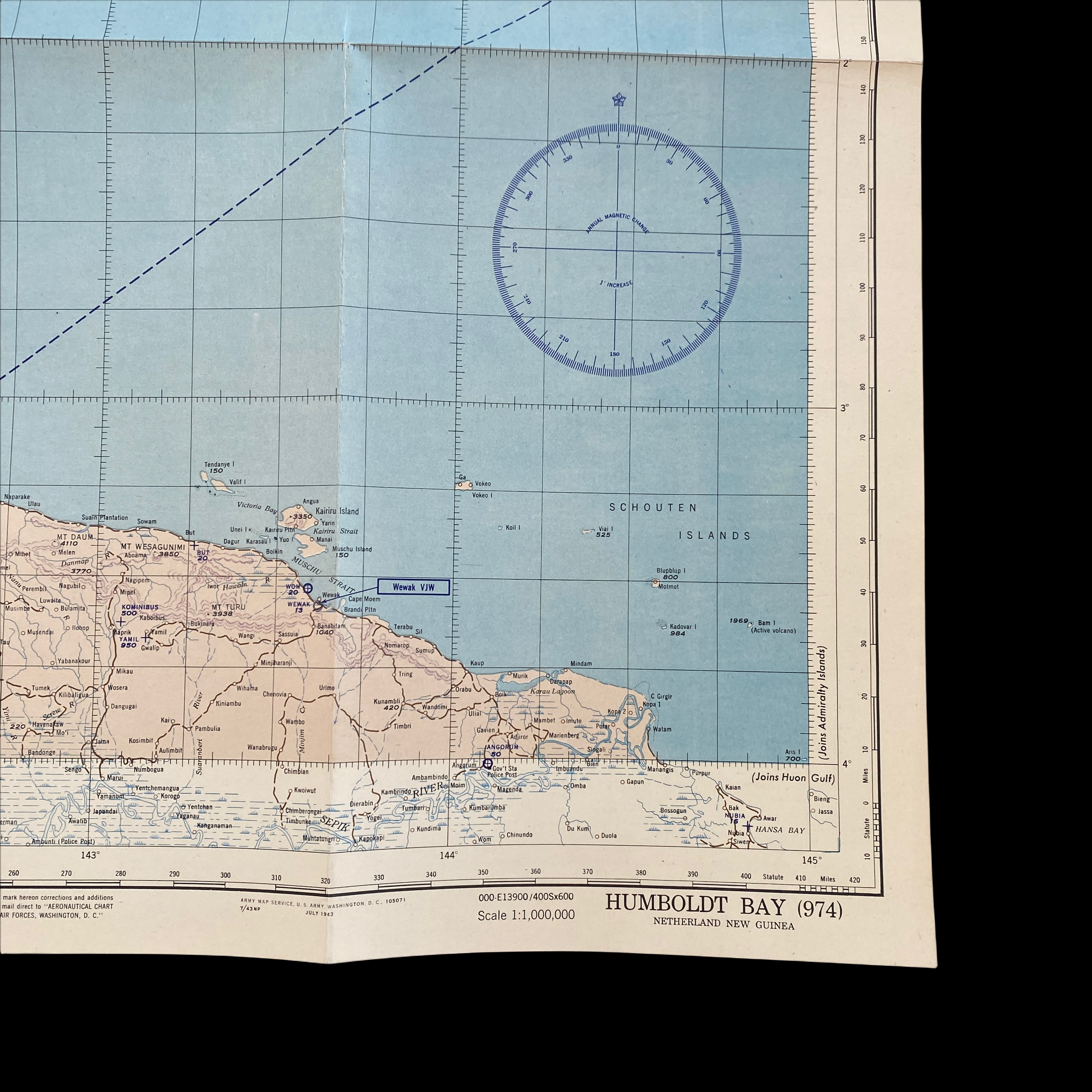

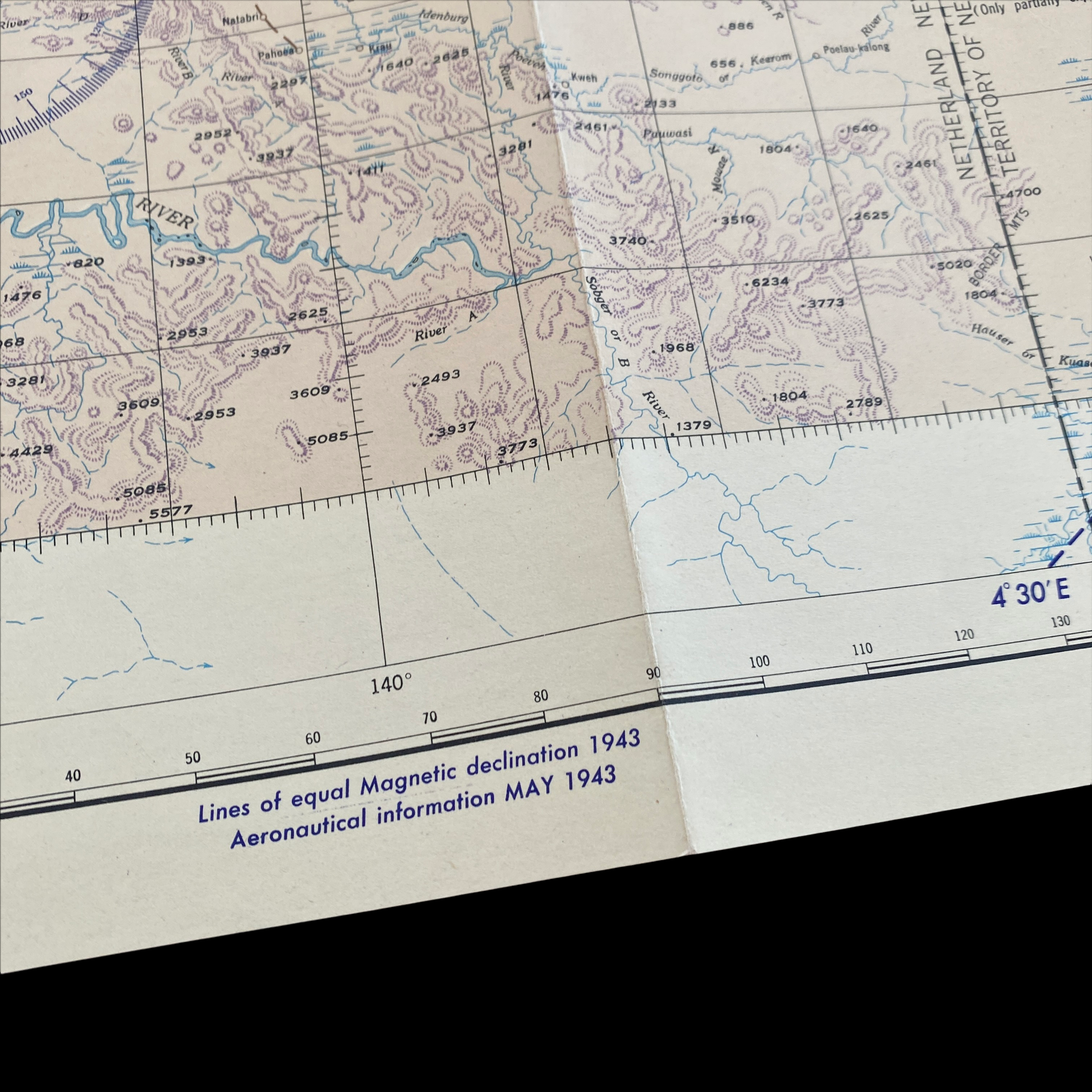

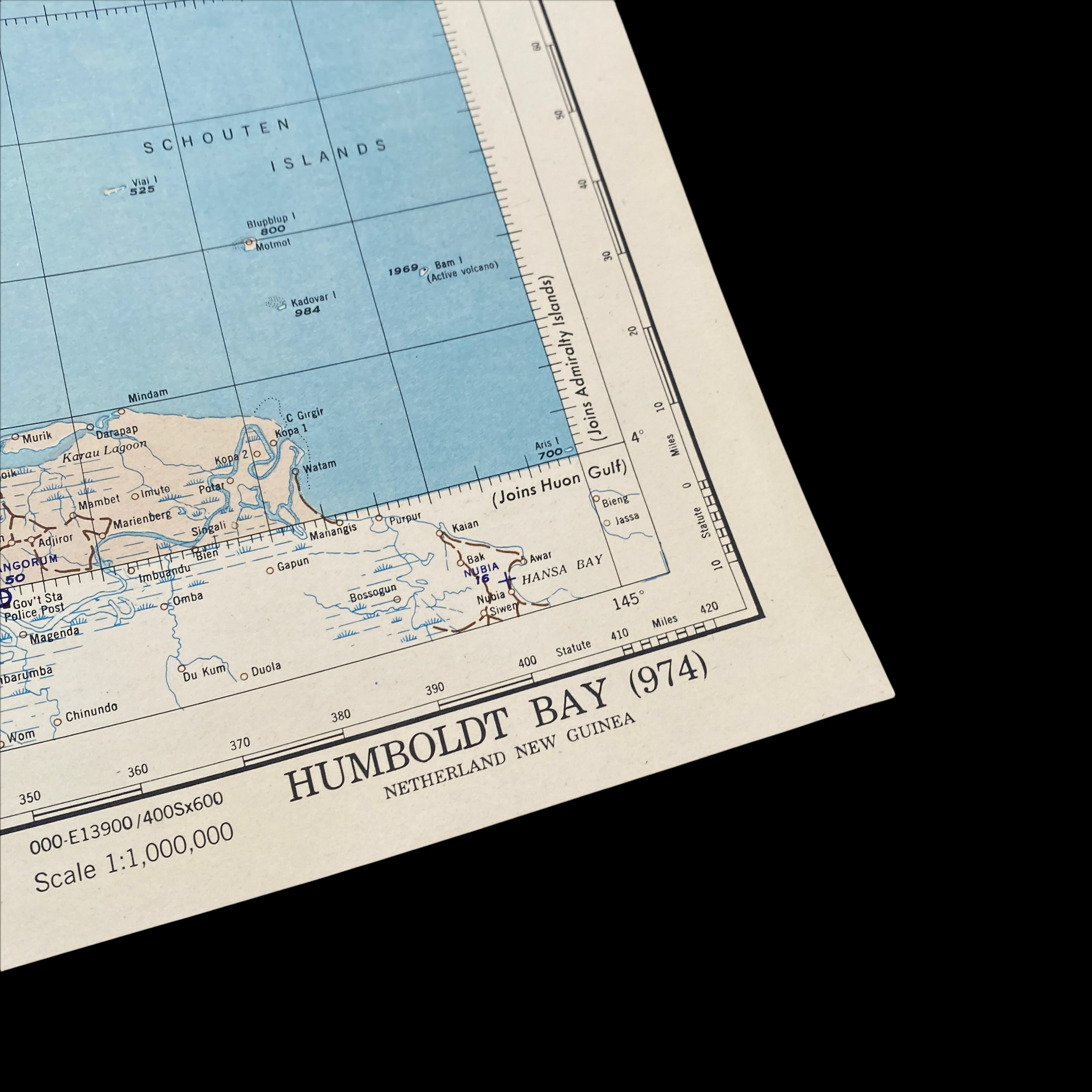
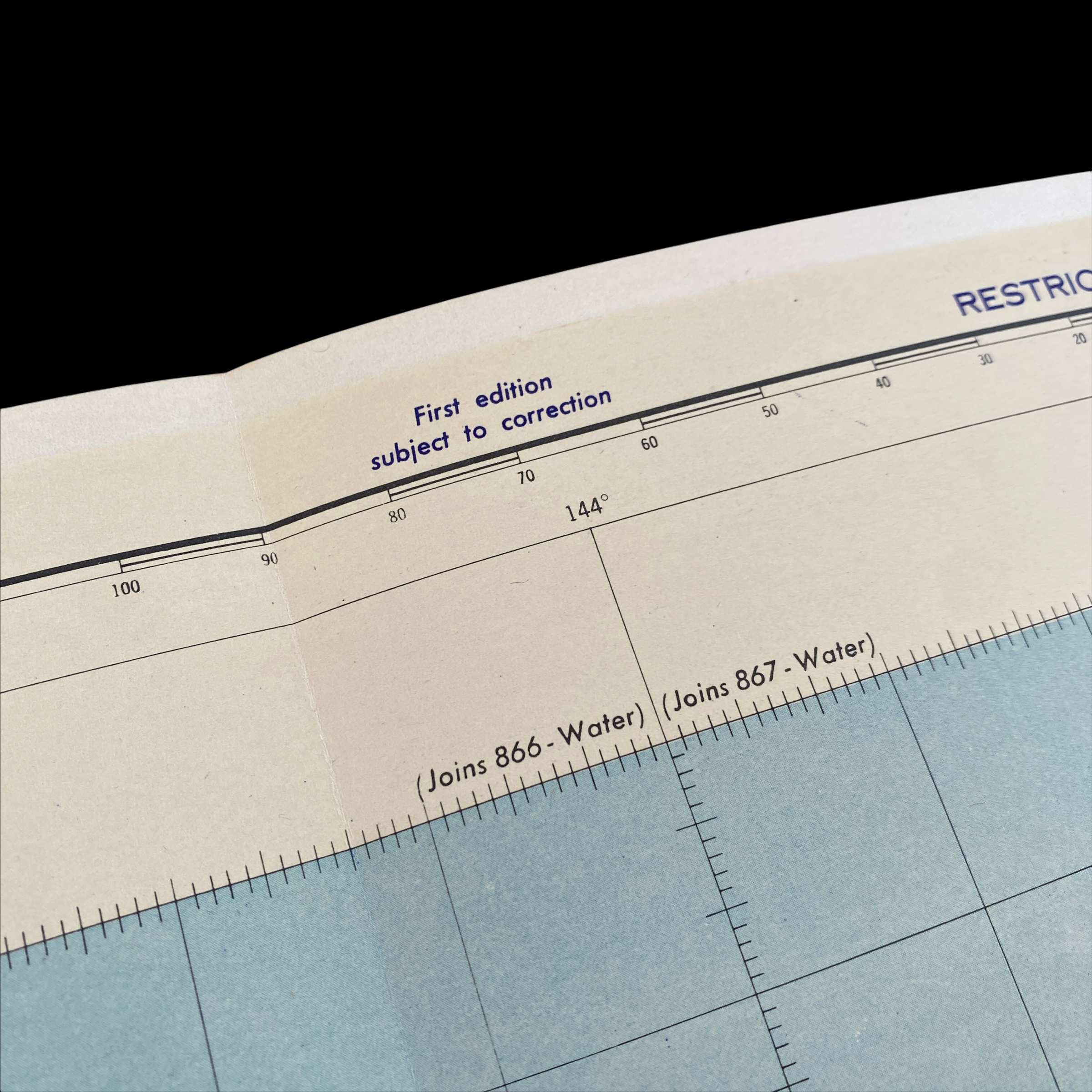
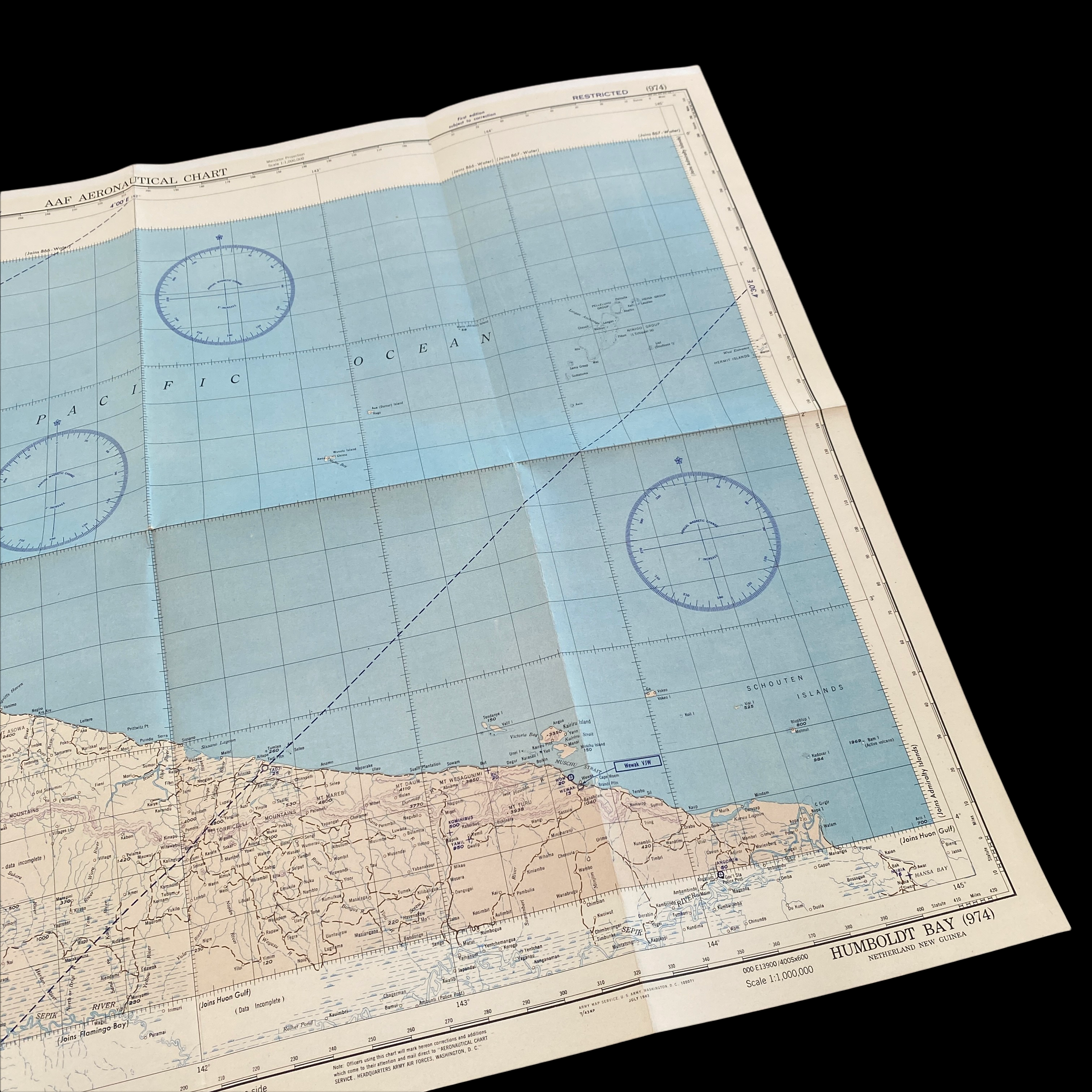


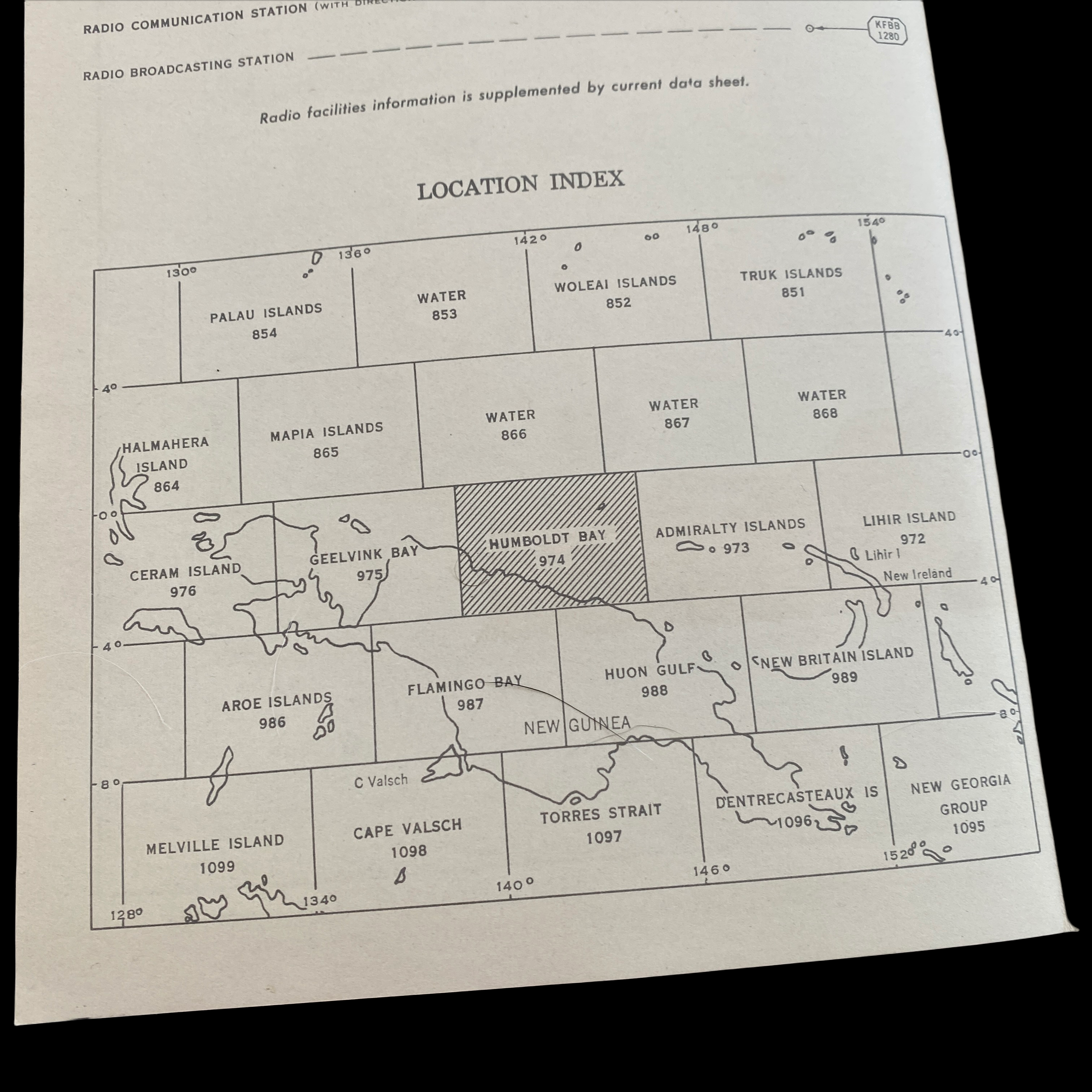

RARE WWII 1943 Operation Reckless New Guinea U.S. Army Air Force Pacific Theater Combat Aircraft Navigation Map
Comes with C.O.A.
Used during the combat operations in New Guinea as part of Operation Reckless and shows the D-Day amphibious landing areas of the Reckless Task Force.
Dated 1943 and titled "HUMBOLDT BAY” this incredible double-sided ‘FIRST EDITION’ Aeronautical Chart was used for aerial navigation of the U.S. Army Air Force during WWII. Prepared under the direction of the Commanding General of the Army Air Force this map is marked ‘RESTRICTED’ while being used in the theater of operation as it contains sensitive information wartime information such as Allied air radio frequencies, vital defense areas, and the location of military facilities. While participating in combat operation missions this map would have been used for the navigation to aerial bombardment targets, aerial reconnaissance, strike attacks, search and rescue missions, transport operations, etc.
Battle of Hollandia:
The Battle of Hollandia (code-named Operation Reckless) was an engagement between Allies of World War II and Japanese forces during World War II. The majority of the Allied force was provided by the United States, with the bulk of two United States Army infantry divisions being committed on the ground. Air and naval support consisted largely of U.S. assets, although Australia also provided air support during preliminary operations and a naval bombardment force.
The battle took place between 22 April and 6 June 1944 and formed part of the New Guinea campaign. The operation consisted of two landings, one at Tanahmerah Bay and the other at Humboldt Bay, near Hollandia. The landings were undertaken simultaneously with the amphibious invasion of Aitape ("Operation Persecution") to the east. The battle was an unqualified success for the Allied forces, resulting in a withdrawal by the Japanese to a new strategic defense line in the west of New Guinea and the abandonment of all positions in the east of the island.